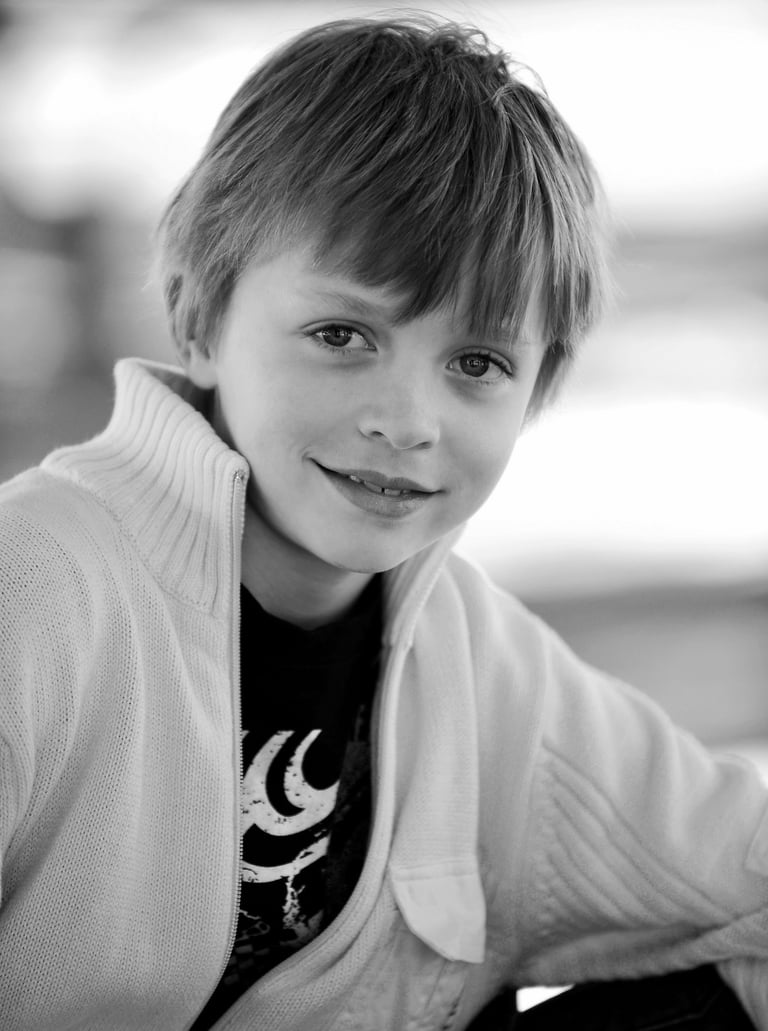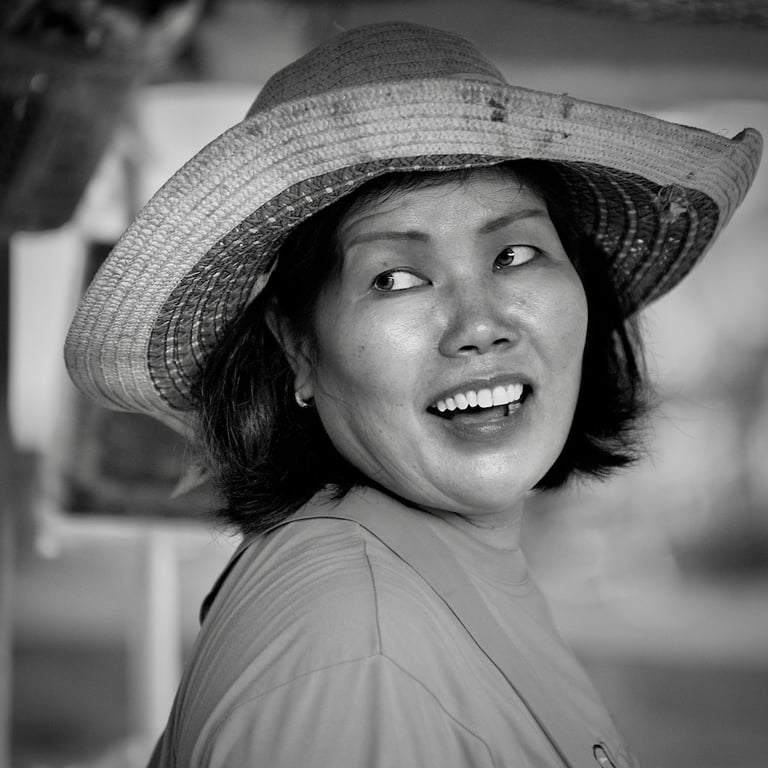Mastering the Art of Street Portraits
Posed vs. Unposed
PHOTOGRAPHY PERSPECTIVES


Street portraits are more than just snapping shots of strangers; they're about capturing the essence of a person's character and the depth of human emotion within the bustling context of street life. If you're ready to elevate your street portrait game, it's time to blend technique with genuine human connection. Here's how to capture soulful street portraits that your subjects will love as much as you do.
Unposed Portraits
Unposed street photography is all about embracing patience as your secret weapon. Picture this: you've found an absolutely killer backdrop—a graffiti-splattered alley, a sunlit café, or maybe a bustling market street. Now, the game is to wait. You might hang back, camera at the ready, just watching the world hustle by until the perfect stranger steps into your frame, their expression or movement lighting up the scene in just the right way.
Or, you might take a different approach—letting the rhythm of the street guide you. Roaming without a fixed destination, your eyes and camera are drawn to the natural drama of everyday life: a heartfelt goodbye, a vendor's animated sell, a child's laughter echoing off the city walls. It's about finding those raw, unscripted moments that happen in the blink of an eye.
When it comes to interaction, unposed street photography usually means you're more of a fly on the wall than a participant. The goal is to blend into the background as much as possible, capturing people in their most honest and unguarded moments without them noticing that the camera is even there. This way, the scenes you capture are completely authentic, unaltered by the influence of your presence.
Part of this silent dance is learning to anticipate the moments before they unfold. It's an art form in itself. You learn to read the subtle cues—the way a person is glancing around as they walk, or the momentary emotion flickering across someone's face. And when the moment comes, you're ready, your finger on the shutter release, to catch it all.
Respecting privacy is paramount. While the streets are a public canvas, not everyone wants to be part of your art. Tuning into people’s comfort levels is crucial. If you catch someone's eye and they seem uneasy, it's your cue to respectfully shift your focus elsewhere. After all, the essence of street photography lies in capturing life, not disrupting it. This respectful approach ensures that your photography remains a positive experience, both for you and for those who inadvertently become subjects of your lens.
Mastering the Art of Street Portraits: Posed vs. Unposed


When you're out there hitting the streets with your camera, diving into the world of street photography, portraits can really add a special zing to your collection. Now, you've basically got two ways to go about this: posed and unposed. Each style has its own vibe and method, but they're both all about getting to the heart of the person in your frame.
Posed Portraits: This is when you actually interact with your subject. Maybe you see someone interesting, you approach them, have a chat, and ask if you can take their picture. It's about establishing a connection, however brief, which can bring a real depth to the photo. You set the scene, maybe guide your subject a bit with where to stand or how to look. It’s kind of like a mini-collaboration, and it’s great because you can really fine-tune the elements of your composition.
Unposed Portraits: Here’s where you channel your inner ninja. You’re capturing people in their natural habitat, doing their thing, completely unaware of the camera. It's candid and raw. This style can be super compelling because it’s so genuine and unfiltered. You need to be quick, observant, and a bit stealthy, though. It’s all about capturing those fleeting moments that can disappear in a flash.
No matter which style you're leaning towards, the key is to keep it real. You want your shots to feel authentic, to tell a story about the people in them. Whether it's a shared smile with a stranger who’s now posing for you, or a secretive snap of someone lost in thought, these street portraits should offer a peek into the lives around you, making them natural and engaging. Just keep practicing, stay patient, and keep your eyes open—great opportunities for memorable portraits are all around you in the hustle and bustle of the streets!
Posed Portraits
When you're doing posed street portraits, it’s all about getting that upfront interaction right. Before you even think about snapping a photo, you’re going to want to strike up a conversation with your potential subject. This isn’t just about being polite—though, of course, that’s super important—it’s about making them comfortable. After all, a relaxed subject who’s given their nod of approval is more likely to give you a natural pose, which is exactly what you’re aiming for.
Here’s the lowdown: you spot someone interesting, someone who just screams ‘capture me on camera!’ Instead of sneaking a shot from a distance, you walk up to them, give them a friendly hello, and let them know why you find them interesting. Maybe it’s their style, the way they carry themselves, or just the vibe they’re giving off. Whatever it is, share it with them—people often appreciate a genuine compliment.
After breaking the ice, the next step is asking for permission to take their photo. This is crucial, not just for ethical reasons, but also because it sets the tone for the shoot. When someone agrees to let you take their picture, they’re more likely to engage with the camera, and that’s when you can really work on crafting a natural-looking portrait.
Once you’ve got the green light, take a moment to guide your subject. Not like a drill sergeant, of course, but gently suggest a spot where the light hits just right, or ask them to think about something that makes them happy. It’s these little directions that can help someone look relaxed and natural, even though they’re posing.
The trick is to keep the vibe light and friendly. Keep chatting with them if it seems to help them relax, or give them the space to settle into a comfortable stance if they’re a bit camera shy. Sometimes a little encouragement like, “That’s perfect!” or “You look great!” can really boost their confidence.
So, in a nutshell, posed street portraits are about respect, connection, and a bit of guidance. With these in your toolkit, you’re all set to capture some stunningly natural and engaging portraits that look like they just happened, even though they were totally planned.
Always offer to send your subjects their photos if they wish. This act of kindness is not only appreciated but also reinforces the positive experience of your interaction. Keep a notepad with you to jot down their email, or use a voice note if you have a smartphone. This simple gesture helps maintain a connection beyond the initial encounter and ensures that your subjects feel valued and respected for their contribution to your art.
Choosing Aperture in Street Portraits
When it comes to the technical side of capturing street portraits, one of the key decisions you'll make is about aperture settings—specifically, whether to go wide to blur out the background or narrow to keep more of the street context in focus. Opting for a wide aperture is a fantastic way to isolate your subject, drawing the viewer's eye directly to the person and giving the portrait a strong, standout quality by softening the busy background into a wash of light and creamy bokeh. This technique really helps the subject pop, especially in crowded or visually chaotic environments.
On the other hand, using a narrower aperture allows you to capture more of the environment, which can add a storytelling element to your photo. This approach can contextualise your subject within their surroundings, adding layers to the narrative of the image. Maybe it’s a bustling market, a quiet side street, or an interesting city event—these details can enrich the portrait, providing a sense of place and the atmosphere that surrounds the subject.
However, it's crucial to make this decision while you're out there on the street with your camera. A common pitfall is attempting to mimic a shallow depth of field effect in post-processing using Photoshop. Let’s be real—it rarely works out well. This kind of digital alteration can easily look unnatural and can detract from the authenticity of the shot, which is a cardinal sin in the world of street photography. Indeed, in groups of street photography purists, such digitally manipulated images might not only be frowned upon but outright rejected. They value the raw truth captured through the lens at the moment the shutter snaps. So, stick to getting your settings right in the moment of capture to keep the integrity and the visceral impact of your street portraits intact.
As you continue to explore the vibrant world of street photography, remember that each shot you take is a reflection of your unique perspective and creativity. Embrace the challenges and the unpredictability of the streets—this is where the magic happens. Keep pushing yourself to experiment with different settings, engage with your surroundings, and capture the stories that unfold around you. Trust in your vision and your camera to tell the authentic tales that only you can see. Let your passion for the craft be your guide, and never stop learning from each click of the shutter. Happy shooting!
In every stranger’s face, there’s a universe of emotions to explore.




